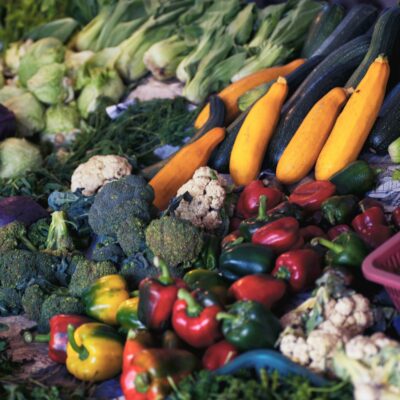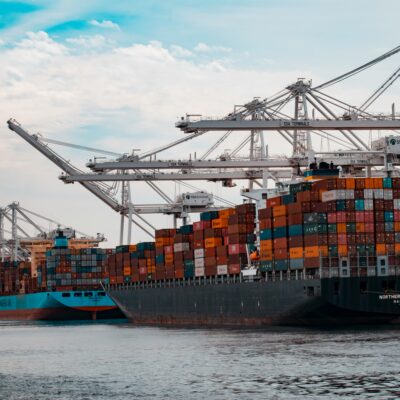
A review of systems and tools for remote food safety risk assessment

The COVID-19 pandemic has significantly boosted the discussions around assessing risk remotely using digital tools. One of the most important tools to assess risk — onsite audits — is not currently available to food safety and quality assurance experts, creating the need to assess the risk remotely. While this verification tool is currently unavailable it is essential that the food industry uses remote risk assessment, by harnessing new analytical tools, all available food safety data, new methods, and new systems.
The GFSI standards and regulations like FSMA require a detailed risk assessment of hazards for ingredients, finished products, processes, and suppliers. According to the GFSI standards and FSMA, generic risk assessment for product categories and suppliers is no longer sufficient. They require assessing risk for suppliers, for facilities (processing plants/factories/packaging plants), and for all the materials used in each facility.
In addition to that, consumer trends for safe, traceable, organic ingredients and reduction in processed foods have increased the need to understand better and to predict the food safety risks. All these factors call for a remote risk assessment approach that:
- is using accurate data about reported issues in the global company’s supply chain
- is not static and is updated frequently because microbial, chemical, allergen, and fraud risks are continuously evolving
- applies predictive models of pathogens' growth, toxins, and chemicals contaminants
- takes into account consumption and population data
- takes into account the processing steps applied to materials (cooking, partitioning, packaging, storing)
- concludes with recommendations on how to mitigate risks
For many food companies, this is a long list of things to consider and implement. I am sure you are wondering if you have all the digital tools that can support the demanding process of assessing risk remotely.

Tools and systems that can support remote risk assessment
Remote risk assessment is not a trivial task. It needs a combination of data management, analytics technology and predictive models. Let’s see which systems and tools that can meet the requirements for a remote risk assessment.
To access accurate and timely data about reported incidents in the global supply chain, you can use online systems like HorizonScan and FOODAKAI:
- HorizonScan is a web-based information service with a suite of proprietary Risk Assessment and Supplier Check tools tracking current and historical global food fraud and contamination issues in near real time. The HorizonScan ingredient risk assessment system monitors safety & fraud alerts worldwide, collecting data daily from over 110 food safety agencies and other reliable sources to deliver timely alerts on emerging food safety issues affecting the global supply chain. The risk assessment is based on the occurrences of hazards in specific materials.
- FOODAKAI is a software enterprise platform that generates tailor-made insights about the food supply chain from global food safety data. It helps food businesses to monitor food safety hazards (biological, chemical, physical, contact material) and food fraud issues in different food materials. The platform collects, translates, and enriches more than 100 million food safety records for food recalls, import refusals, and laboratory testing analysis results that are published by National Authorities. The platform identifies risk levels for each hazard type by implementing a computational model that classifies risk as high, medium, or low based on the number of recalls and severity of the hazard that occurred in specific food materials.
For calculating the health burden of microbial and chemical hazards, you can use FDA-iRisk:
- FDA-iRISK is a web-based system designed to analyze data concerning microbial and chemical hazards in food and return an estimate of the resulting health burden on a population level. It uses a second-order Monte Carlo simulation to combine the impact of variability from all user inputs into the final estimates of risk. It also provides the option of specifying quantitative descriptions of uncertainty to the majority of model parameters.
When you need to predict the behavior of a specific microorganism under a variety of conditions, you may use ComBase and CB Premium.
- ComBase is an online tool for quantitative food microbiology. The focus of ComBase is describing and predicting how microorganisms survive and grow under a variety of primarily food-related conditions. It provides access to over 60,000 records, describing how food environments, such as temperature, pH, and water activity, as well as other factors (e.g. preservatives and atmosphere), affect the growth of bacteria.
- CB Premium is a web portal of predictive models and risk management tools to help enhance the safety and quality of food. What differentiates CB Premium from ComBase is its sole focus on predictive models that have been developed for and validated in real commercial foods. CB Premium models focus on how microorganisms grow and die in commercial foods. It provides predictive models for microbial hazards. It is connected to ComBase models. Bibliographic reference to each predictive model is available.
When it comes to assessing the risk for your supply chain taking into account processes and international rules, you can use software like Safefood360.
- Safefood360 is a compliance management software that conducts Risk Assessment based on international best practices. The software allows the building of custom Risk Assessment models and applications in workflows for HACCP, Management Processes, PRPs, and Monitoring programs. Using SafeFood360 a food business can build risk assessment models for different suppliers and material types.
We have created a league table to show a comparison of these tools and systems, to support you with your remote risk assessment.

How to implement remote risk monitoring and assessment
Several critical steps are involved in the process of risk assessment. As one can see in the comparison table (above), currently a one size fits all solution that can be used for remote risk assessment does not exist. There are complementary solutions out there that focus on specific aspects of risk assessment.
So, how do we combine the different pieces of the puzzle to create a robust strategy to implement remote risk monitoring and assessment? The following table summarizes the main steps for a remote risk assessment and maps the corresponding tools and systems that can be used to implement each step.

It’s critical to take into account that risk assessment is not a one-off task or a task that can be performed once or twice a year. The global supply chain is complex and is not only affected by pandemics such as COVID-19, but also dependent on environmental, social, and economical factors.
Food safety professionals need to monitor new hazards that may increase risk in their supply chain and follow new scientific and technological advancements that may improve the risk assessment process.
For the latest technological advancements, we will continue to keep you informed in these uncertain times and to be prepared for the future.







